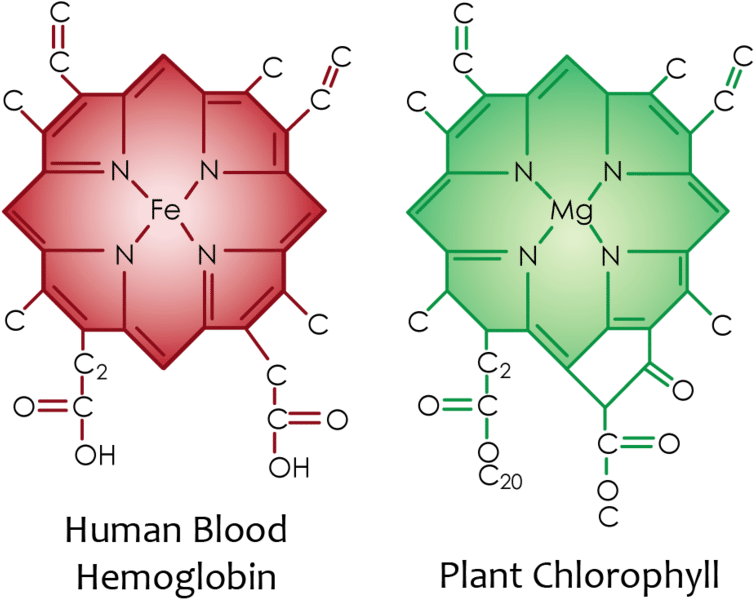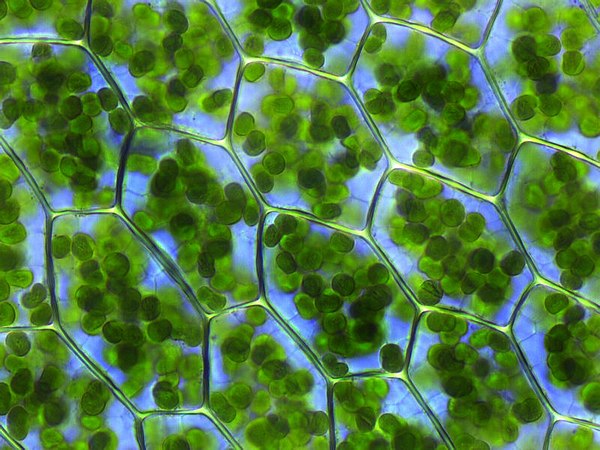Autumn is a special time as many leaves start to change colour. But what is causing this process to happen?
What is chlorophyll?
First we need to look at the chemistry of leaves. Leaves contain chlorophyll, a very special molecule that can absorb light. Chlorophyll is almost identical to haemoglobin, the chemical that gives blood its red colour; the only difference is that chlorophyll contains magnesium while haemoglobin contains iron.

It is chlorophyll that harnesses the energy from the sun and makes it available for plants to use. This energies used to convert carbon dioxide and water into a type of sugar called glucose. During this process, oxygen molecules are released into the atmosphere. it is estimated that without plants, the earth might run out of atmospheric oxygen within 30 years.
The glucose that is made during photosynthesis is then combined with nutrients absorbed from the soil to make new organic chemicals. These chemicals are in turn used for different processes such as making new leaves and wood, and for defending themselves against insect attack.
Trees as medicine
Humans and other animals benefit from some of the chemicals made by trees. Medicines such as aspirin, the anti-malarial quinine and the anti-tumour taxol all come from trees. Of course there are also some deadly chemicals produced by trees such as cyanide.
So why do leaves change their colours through autumn? Most leaves are green throughout the growing season. They are green because the pigment chlorophyll dominates the leaf. Chlorophyll absorbs red and blue light, but not green. When we look at a typical leaf, what we are actually seeing is the non-absorbed green light being reflected back to our eyes.
Chlorophyll is constantly being replaced during the growing season, but this process slows down in the autumn, allowing the other chemicals in the leaf to show their colours. These familiar colours are yellow (from carotenoids and flavonoids), orange (from carotenoids) and red (from anthocyanin and carotenoids). Different tree species contain different amounts of these chemicals, which is why we see such a variety of autumn colours.

Some of these carotenoids are found in other familiar plants:
Beta-carotene is responsible for the orange colour of carrots, sweet potatoes and apricots. Lutein gives a yellow colour to egg yolks, sweetcorn and marigolds.
Lypocene is the red pigment found in tomatoes, watermelons and red cabbage.
The pH of the tree’s sap will also influence the colour of the leaf. In acidic conditions, anthocyanin are red, at neutral pH they are purple and in alkaline conditions they are blue.
Defence chemicals
Trees have a limited amount of resources. Every chemical that it produces is precious and so before it sheds its leaves for the winter, the tree will restrict the transport of nutrients to its leaves. This means that the chlorophyll is no longer being replaced, so the green colour fades. Meanwhile, the sugar concentration in leaves is increasing, increasing the production of other pigments such as anthocyanin. It has been shown that the red pigments of anthocyanin may protect the leaves from aphids.
But if it costs a tree valuable resources to make leaves, why would it cause them to fall off every year? The short answer is that the leaves deciduous trees are not capable of withstanding winter weather. Also, shedding the leaf also stops the tree from losing excessive moisture. Evergreen trees tend to have more thick and waxy leaves that are capable of surviving in colder temperatures. It costs a tree more resources to produce and maintain an evergreen leaf, so it makes sense that these leaves are kept for as long as is possible.
Now we know about some of the chemical processes going on within leaves. But what signals them to change colour? It comes down to a combination of two things: the length of the day and the temperature at night. The production of glucose through photosynthesis is slowed down as the amount of daylight decreases. As the temperature drops, chlorophyll is broken down more quickly. Towards the end of this process, the tree produces abscisic acid that seals off the leaf, preventing water reaching the leaves and also any remaining trapping chemicals within the leaves. These trapped chemicals will continue to break down, so causing them to change colour throughout the autumn. The final change is when the leaves become brown – this is when the chemicals in the leaf have all broken down.
Climate begins the process
The climate can affect the autumn show of colours. Cold nights will degrade chlorophyll. If it is cold, but not freezing, then anthocyanin production will increase. The production of this pigment is also increased bu dry weather and bright sunny days. Anthocyanin, of course, is what is responsible for the spectacular red, blue and purple colouring in leaves.
Trees are wonderful, living science demonstrations.
Find out more about our Tree Inspections & Surveys or contact us for advice or to book an appointment.
References
Kew Gardens ‘Why do leaves change colour in autumn?’
National Geographic ‘Chlorophyll’
Brittanica ‘Chlorophyll’
Shigo Tree Dictionary ‘Tree chemicals that kill or cure’
Compound Interest ‘The chemicals behind the colours of autumn leaves’
Promega Connections ‘The chemistry of autumn colours’
Marco Archetti ‘Evidence from the domestication of apple for the maintenance of autumn colours by coevolution’, Proceedings: Biological Sciences 2009 Jul 22;276(1667):2575-80
Woodland Trust ‘Why do autumn leaves change colour and fall off in autumn?’